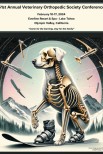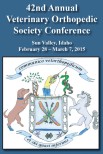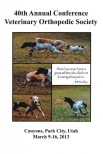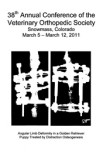Objectives: The aim of this study was to describe the use of patient-specific three-dimensional (3D)-printed osteotomy guides, repositioning guides and custom-printed titanium plates for acute correction of antebrachial limb deformities in four dogs.
Methods: Retrospective review of antebrachial limb deformities in small breed chondrodystrophic dogs that were surgically corrected using a closing wedge ostectomy of the radius at a predetermined site using patient-specific osteotomy guides. Reduction was achieved without the need for intraoperative measurements using patient-specific 3D-printed repositioning guides secured and manipulated using temporary Kirschner wire fixation. The ostectomy of the radius was stabilized with a patient-specific 3D-printed titanium plate.
Results: All limbs were corrected to within 3.5 degrees (standard deviation [SD]: 1 degree) and 7.5 degrees (SD: 3 degrees) of the pre-planned deformity correction in the frontal and sagittal planes, respectively. No complications were encountered. Owners completed a canine orthopaedic index survey at a median postoperative follow-up time of 19 months. Surgery eliminated the main presenting complaint of buckling over of the manus in all cases.
Clinical significance: The 3D-printed osteotomy repositioning guides and titanium plates facilitated accurate acute correction of antebrachial deformities in this case series. The methodology described simplifies intraoperative surgical decision-making on limb position with good clinical outcomes seen in a small number of clinical cases.









